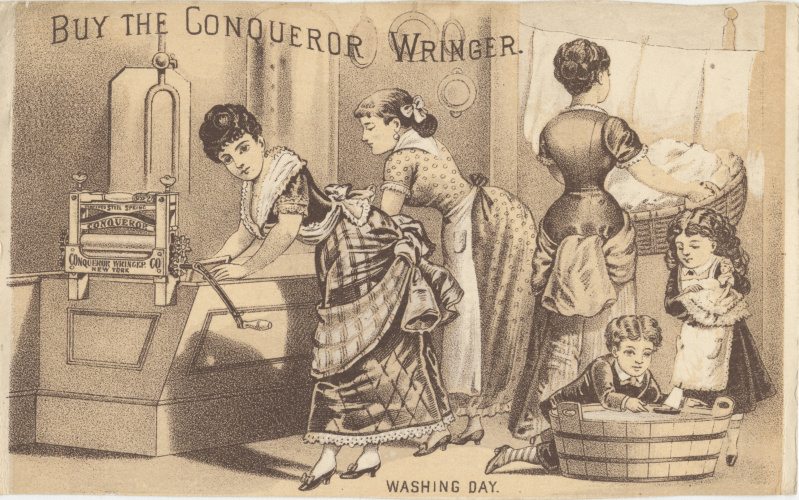
In this week’s episode of The Secret Life of Machines, hosts Tim Hunkin and Rex Garrod set about demystifying the modern automatic washing machine–a device Hunkin calls an “ingenious contraption.”
We open with a mini-history lesson on the evolution of clothes-washing technology, from the classic rocks-and-stream method to the slight improvement of the washing dolly and onward to the first hand-operated, self-contained washing machines. This information also appears in the comic strip that accompanies this program. (Beware of brief cartoon nudity when the discussion turns to sailors washing their clothes by simply tying them to a rope and pulling them along behind their ship.)
The washing machine didn’t begin to assume the form we know today until the advent of smaller electric motors (for an extended discussion of the electric motor, check out the episode on the vacuum cleaner) in the 1930s. Even then, washing machines remained exorbitantly expensive–often costing as much, as Hunkin points out, as a small car. This changed with the arrival in the early 1960s of the Rolls Razor Twin Tub washing machine, and the resulting expansion of the market allowed additional manufacturers to get involved with perfecting washing machine design.
In the latter part of the program, Hunkin and Garrod explain via a series of simple models how the various parts of a modern washing machine work. They examine the counterweights, typically concrete, that help dampen the vibrations when the washer goes through its various cycles. Hunkin examines a solenoid valve and squirts water in his face in the process, and an animation explains how the valves work. Rex Garrod–a movie stunt man by trade–explains how he uses solenoid valves when performing a car rollover, which he also demonstrates. Following the solenoid valve, the program also examines the pressure switch for turning off the water flow, the electric heating element that warms the water, the spin-drying process, the pump to remove the water from the machine, and finally the programmer/timer. In partial illustration of how the programmer/timer functions, Hunkin shares another of his art pieces, a coin-operated device called The Chiropodist.


